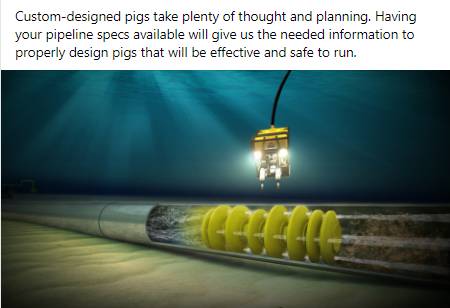 Drinkwater Products explains the process of pipeline pigging
Drinkwater Products explains the process of pipeline pigging
Pipelines play an essential role in our everyday lives; they transport crude oil and natural gas from the ground to refineries that process them. That’s just one example of pipelines, which are used in a variety of industries. A pipe can transport food, beverages, household goods, pet foods, pharmaceuticals, and paint. Unfortunately, damage, clogged, or cross-contaminated can cost companies a lot of money. Pipe pigs are employed to maintain pipelines in a suitable condition for liquids.
Introducing Pipeline Pigs
Pipe pigs are used to transfer residual products through pipelines. Liquids or gases propel residual products instead of solids or liquids. Even though build-up in a pipeline can lead to transmission delays, cracks or flaws can lead to catastrophic results.
Pigging in oil pipelines and flowlines ensures proper flow. Pigs are introduced into pipelines using a pig trap, which consists of a launcher and a receiver. If the pig is forced through the product flow or is towed by another device, it can be moved without affecting the flow. Pigs generally sweep the pipeline by scraping the sides and pushing debris forward.
A pipeline pig can perform a variety of functions along the pipe run, including clearing debris and inspecting its interior as it travels.
How to Pig a Pipeline
Gas pipelines become clogged with debris, grease, corrosion, and fractures over time, affecting their flow integrity and having the potential to be an accident hazard. Pipeline pigs can help to prevent these problems so that optimal flow is guaranteed.
There is a variation in the rate of travel along the pipe. Pressure is one factor determining how fast the pig travels. As the pig approaches the bends, it may slow down at first, but then speed up as it nears the end of the journey.
Gas-propelled pigs move less smoothly than liquid-propelled pigs due to the compressibility of gas. The type of propellant used depends on the application, and there are a number of factors to consider. Common gases include compressed air, nitrogen, and carbon dioxide.
Pigging systems may use a liquid and a gas simultaneously. A product may be transported by a pig propelled by water. When the pig is delivered, a compressed air engine may propel it back to the source.
Pigging in Oil and Gas Pipelines: What Does It Mean?
In the oil and gas industry, pipeline pigs are used for several purposes, including cleaning, inspecting, and purging pipelines. Pigging should only be carried out by professionals who have experience with the process.
Drinkwater Products Can Solve Your Pipeline Pigging Needs!
In need of pipeline pigging services? Get professional guidance before implementing a pigging system. Our company is the world's leading industrial pigging specialist. Any aspect of pigging can be discussed with one of our friendly, knowledgeable engineers, so feel free to contact us.
We provide pipeline decommissioning and commissioning solutions for several industries, including the petrochemical industry. With years of experience, we work closely with our team of highly-skilled technicians to advise you on choosing the right pipeline pigs for any operation. For more information about our services or to request a quote, please contact us today.

